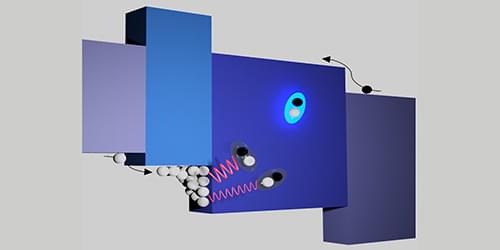OLED performance depends on the behavior of electron–hole pairs, or excitons, that form within the emissive layer of the device. High efficiencies can be obtained when most of the excitons produce light as they decay, but some excitons can be lost without emitting light through a process known as exciton–polaron quenching (EPQ).
EPQ was believed to occur mainly within the bulk of the emissive layer, but recent studies have suggested that significant quenching can take place at the interface with the adjacent device layers. To isolate this energy-loss channel, the researchers designed a series of bilayer devices that allowed them to identify three physical factors that govern interfacial EPQ in any OLED device. They found that the dominant factor is the effect of the energy barriers experienced by electrons and holes at the interfaces: A barrier higher than about 0.2 eV leads to greater interfacial EPQ, which causes a significant drop in emission efficiency.
Armed with this knowledge the researchers engineered OLED devices to minimize losses from interfacial EPQ, which resulted in efficiency enhancements for red, green, and blue devices of 70%, 47%, and 66%, respectively. The loss mitigation also increased the lifetime of blue OLEDs by as much as 67%, an important result for creating long-lived full-color displays.









Leave a reply